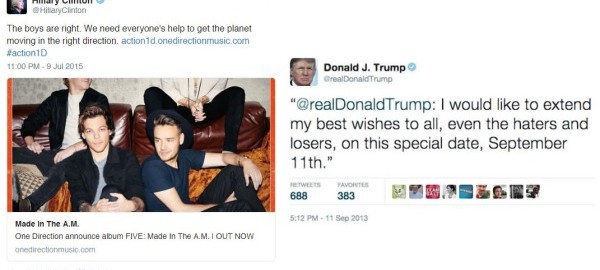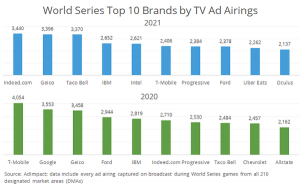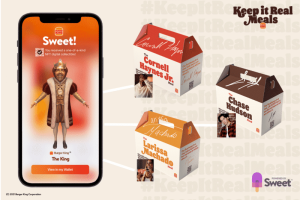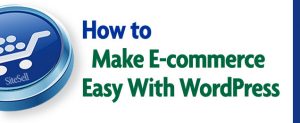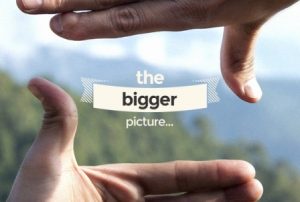Barack Obama’s election heralded a new dawn when it came to digital marketing. Obama was a pioneer of social media during his 2012 election campaign and ended up spending 10 times that of his rival, Mitt Romney ($ 47 million). While small businesses may not have access to the resources of a presidential lobby for full digital marketing campaigns, they should all make full use of social media, just like Obama in 2012 and all of this year’s nomination candidates.
A proactive and engaging social media presence is pretty much expected of anyone hoping to be president now and, so far, this year’s candidates haven’t disappointed. From the controversial soundbites of Donald Trump to countless memes of Bernie Sanders, social media has played an important role so far in this year’s nomination race. So, what can small businesses learn from this year’s ‘social media election?’
Celebrity selfies
Many brands already take advantage of the benefits that come from working with influencers. Anyone with a large, engaged following can be an influencer. Whether they’re musicians, CEOS or industry experts, they have the power to amplify your message to a whole new audience. Over the course of her nomination campaign Hilary Clinton has had more than her fair share of celebrity endorsements but none perhaps as impressive as her selfie with the queen of social, Kim Kardashian. The image garnered over 800 thousand likes and introduced the presidential hopeful to over 65 million of Kim’s Instagram followers.
While your small business shouldn’t expect celebrity endorsements from the get go, see who’s an influencer in your industry. Are there any industry publications you can collaborate with, or an expert in your field with a big social following? Interview them for a piece of content on your site and encourage them to share on their social media or simply engage with them whenever they post interesting content. The more you associate yourself with experts, the more your followers will see you as one.
Youth insight
More people than ever now use social media, with over 74% of online adults reported to use one or more of the platforms regularly. For younger users, the numbers are even more expansive, with around 90% regularly using social media. While Bernie Sanders is comfortably the oldest nomination candidate in the race for president, he’s been a great example of using social effectively. The majority of his social media activity is done by a team of young, engaged, and ultimately knowledgeable campaign workers. His work on Instagram and Facebook, in particular, has meant his follower numbers have risen at a much higher rate than both Hillary Clinton and Donald Trump, despite his initial minnow status.
Your demographic depends on your product as a business, but if you can make content that appeals to a young audience then you have a great opportunity to get your message in front of thousands of other people.

Facebook follower growth of three of the candidates as of 03/29/2016
Keep it topical
It’s easy for politicians to keep it topical. Commenting on events, engaging with supporters (or even with denouncers), and newsjacking to help promote their own agenda is part and parcel of any political race. However, it can often be more difficult for businesses to effectively use topical events for content. When One Direction announced the launch of their ‘Action One Direction’ scheme, which aims to raise awareness about the environment, Hillary tweeted about it, copying in the band’s Twitter handle. She used both their influencer status, as well as the topical launch of the scheme to great effect, and got the most Twitter interaction on any single tweet out of any of the presidential candidates so far. Her rival Donald Trump, on the other hand, has a more checkered history with newsjacking (see below).
If something big happens in your industry then comment on it, share articles and add your voice to the discussion. Your followers only follow you because they have an interest in what you have to say so don’t be afraid to pipe up. If you’re the expert in your industry, then let everyone know. The more engaging the content, the better.

Clinton shows how to newsjack, Trump’s past comes back to haunt him on Twitter
Use multimedia content
We all know that multimedia content is now an integral part of social media platforms. It’s not enough to simply post basic text status updates and tweets anymore. All candidates now use Instagram, and many repost videos of television appearances, rallies and debates, which can all help highlight key aspects of their campaign. The average business only spends around 6 hours a week on social media, so you have to use it wisely. Instead of drafting long and cumbersome text posts, quickly snap images of new products or events and share with your audience. The more relevant and up-to-date you seem, the more likely they’ll be to engage and aid in your brand generating a better reach.
Social media started out as a simple networking tool but has grown to be so much more. It’s so powerful now, that candidates for the biggest job in the world hire entire teams to take control of their presence on it. Most businesses are already savvy to the benefits of social media, with 89% of businesses now using Facebook. Take notes on this year’s presidential candidates, though, and you can make your social media presence truly presidential.
Business & Finance Articles on Business 2 Community(31)
Report Post